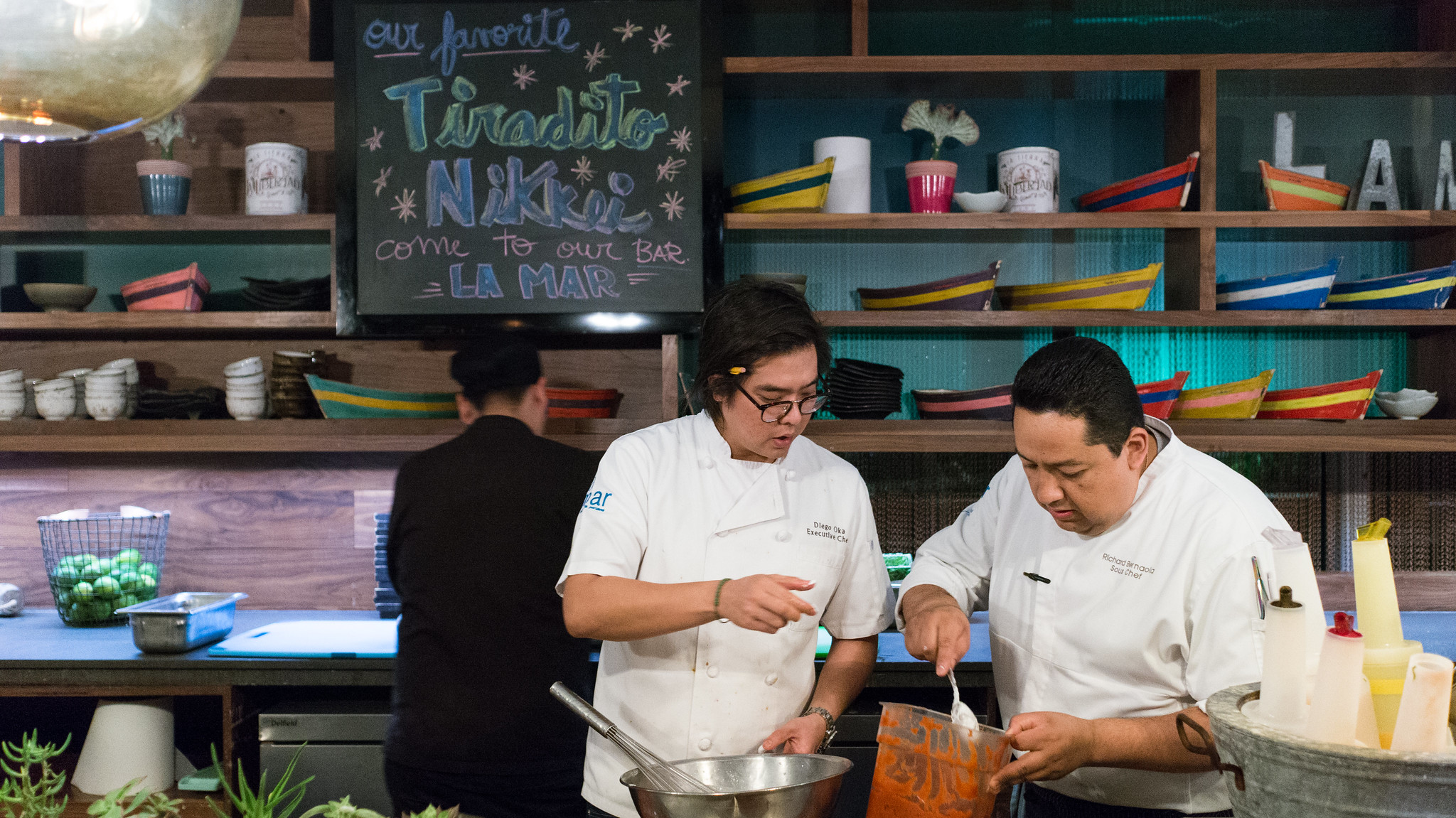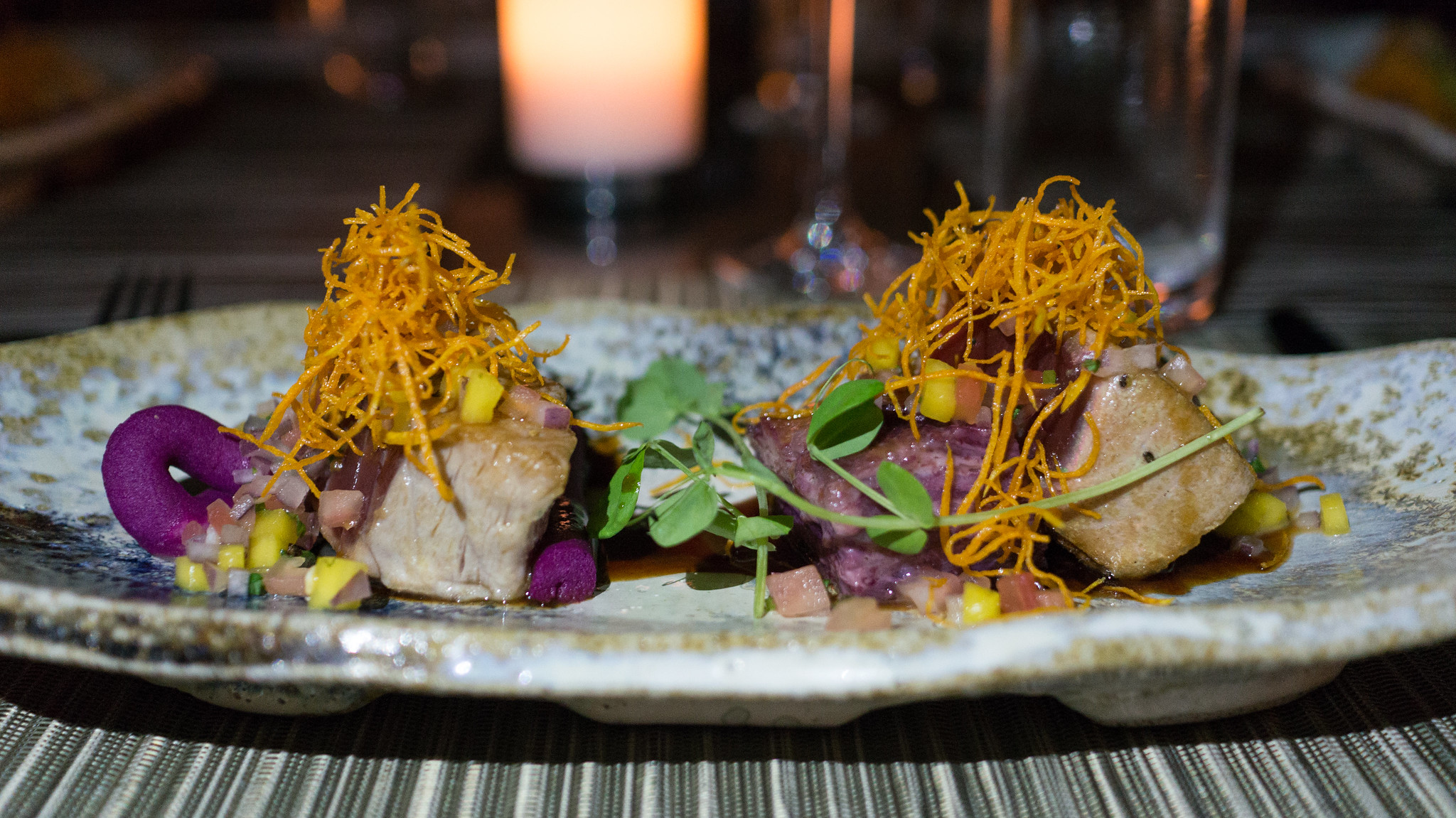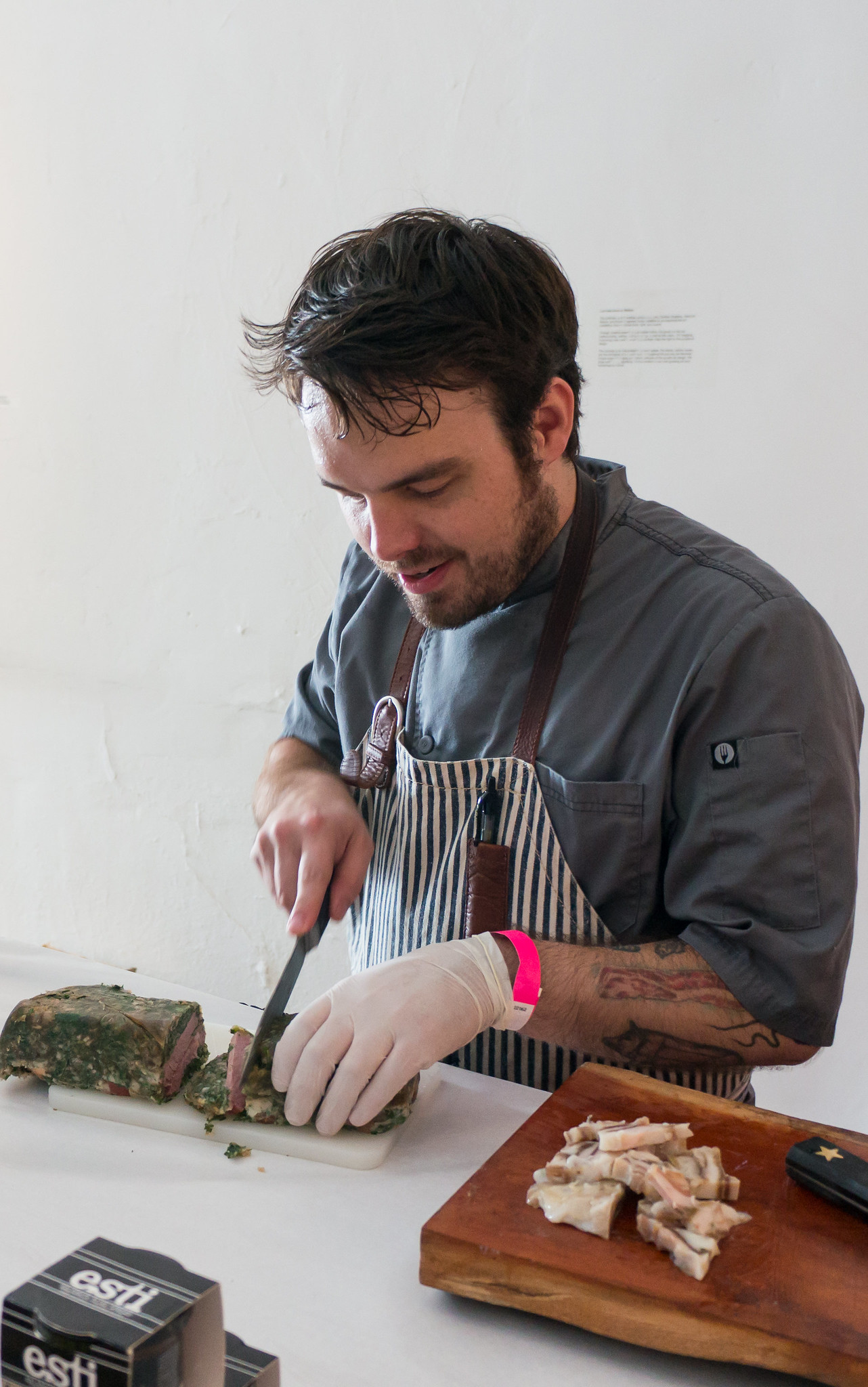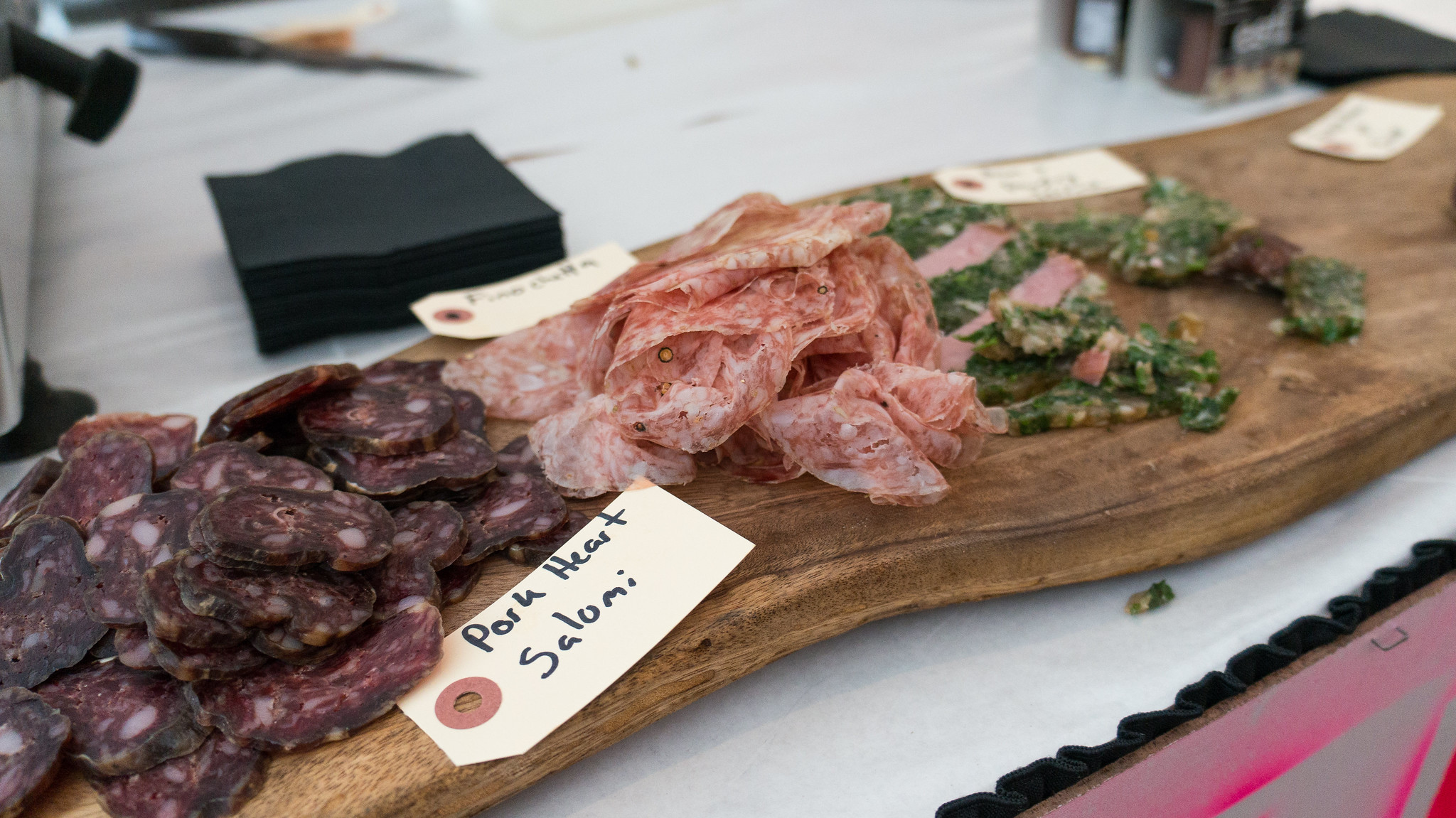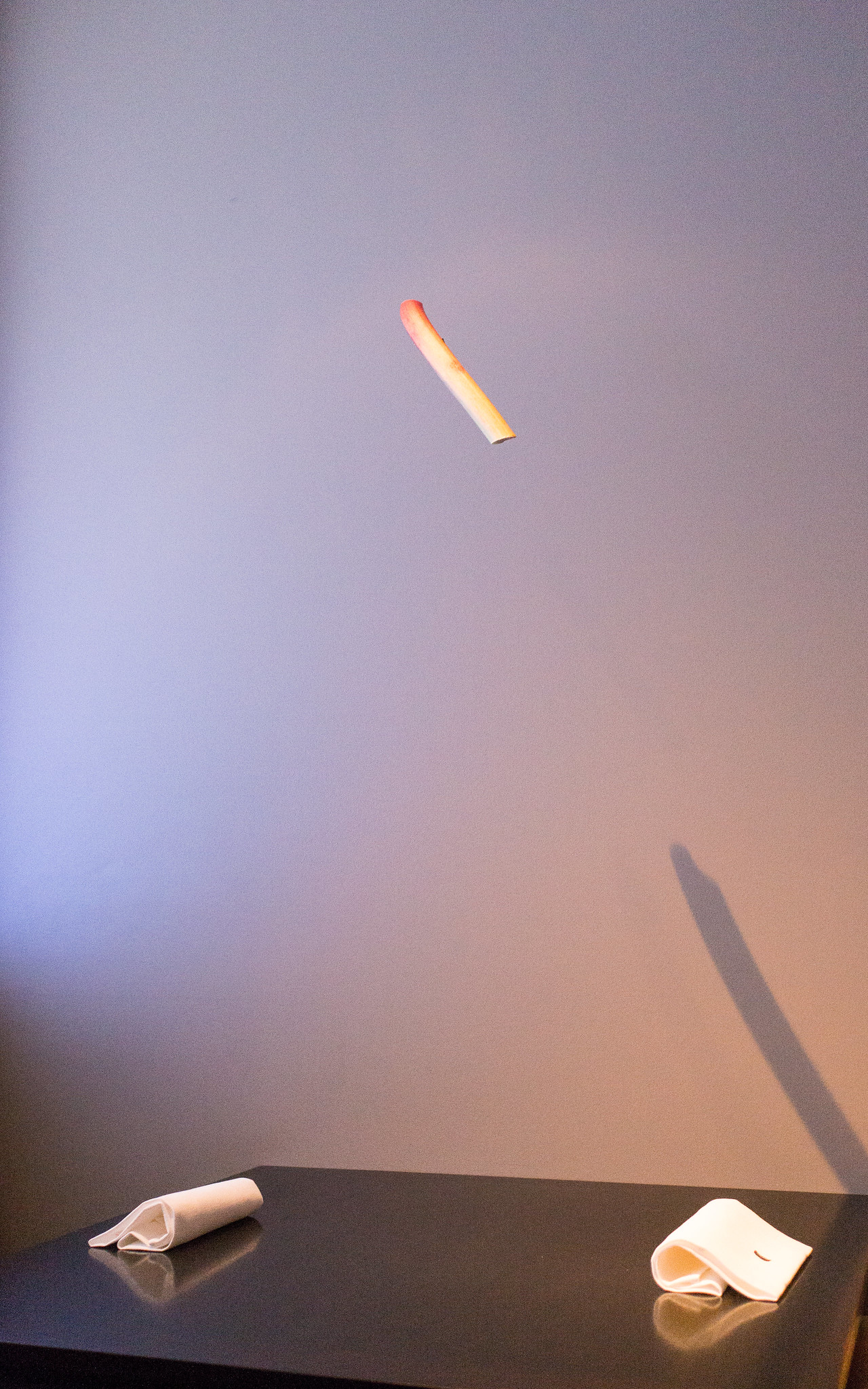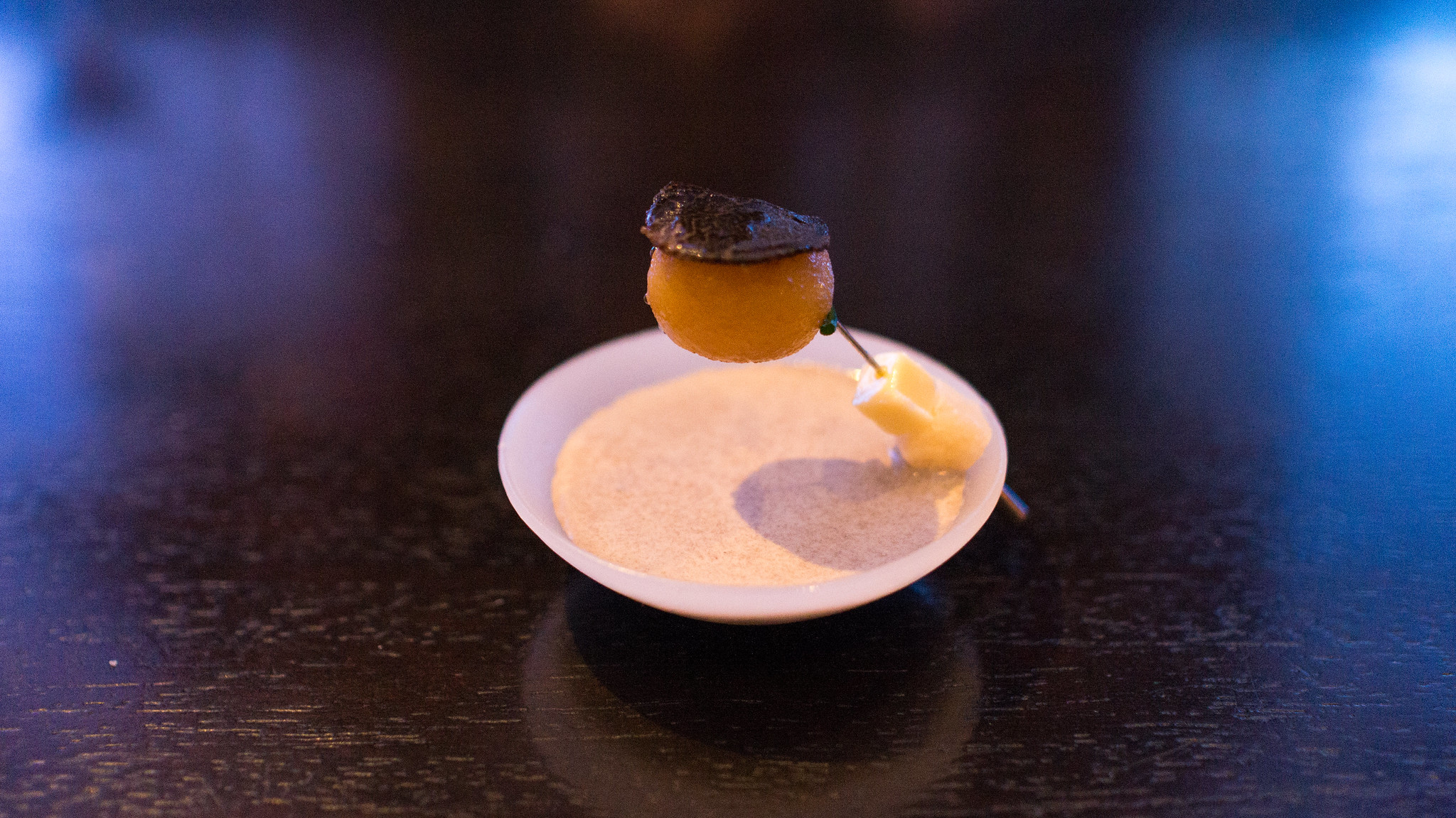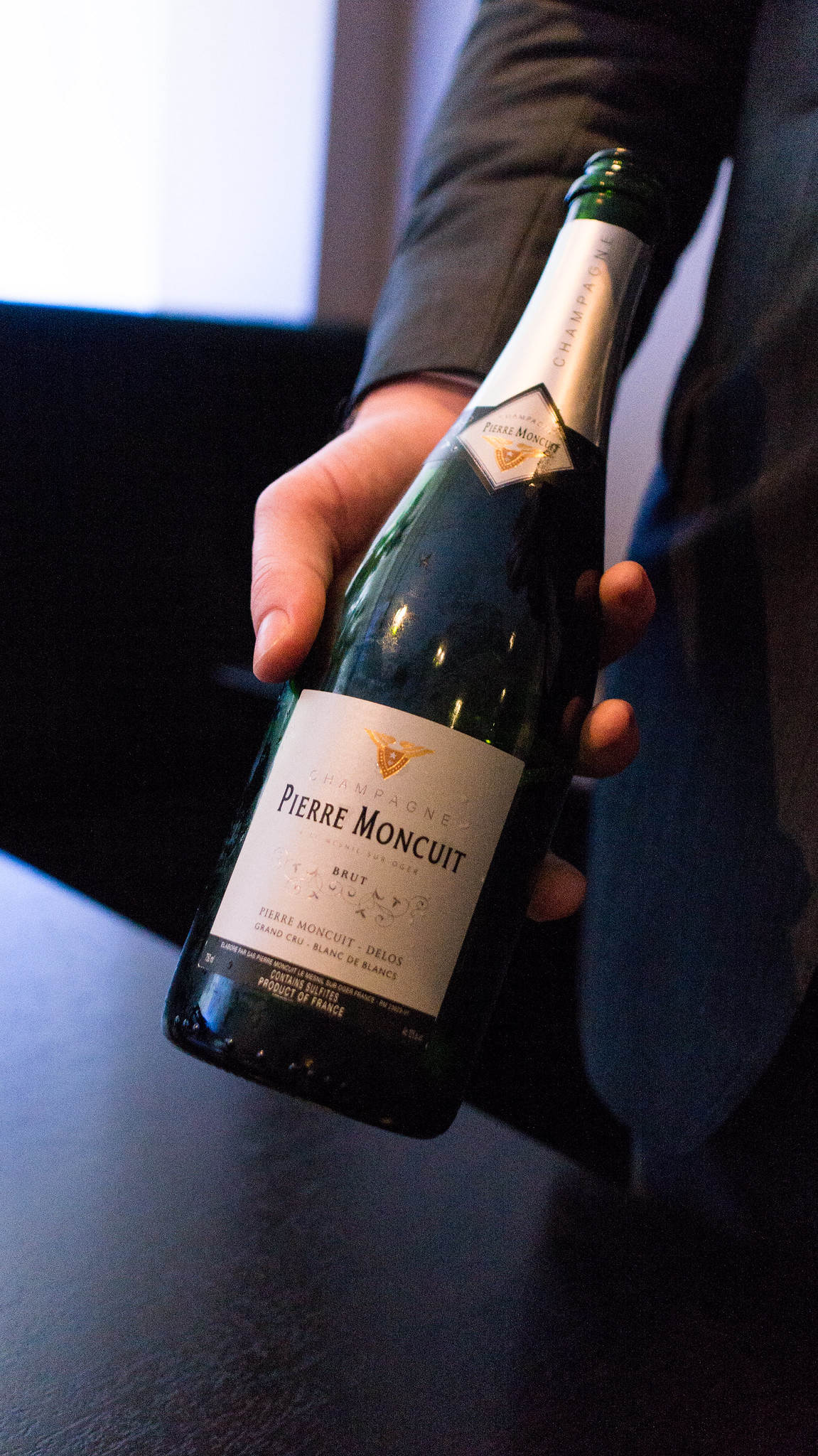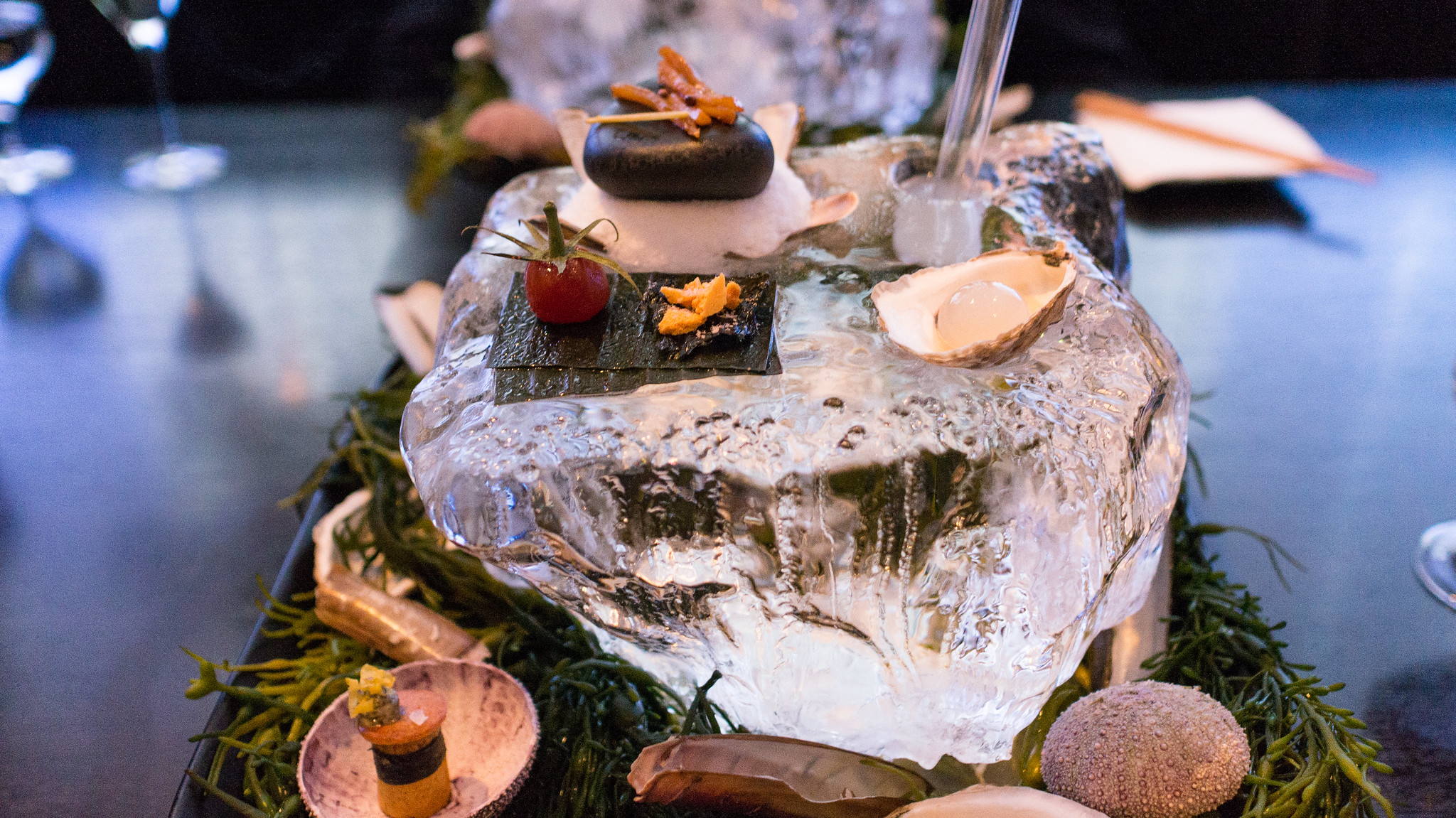Monday, December 22, 2014
Cobaya Diego at La Mar
It was big news when Gaston Acurio – Peru's most famous and celebrated chef – decided to open a restaurant in Miami. But Acurio has literally dozens of restaurants around the world; he's clearly not cooking in all of them at the same time. At Miami's La Mar, the executive chef responsibilities fall to Diego Oka. In an Edible South Florida piece last year, I recounted Diego's introduction to Acurio as a nervous 16 year old peeking around the corner of a supermarket aisle. He was invited to visit Acurio's restaurant the next day, and pretty much never left. After working with Acurio in Peru, he opened La Mar Cebicheria Peruana in San Francisco with him, then came to Miami to open our own version of La Mar.
Perhaps unlike many other U.S. cities (including San Francisco), Peruvian cuisine is nothing new here. In fact, South Florida already had over 200 Peruvian restaurants when I last counted, as La Mar was opening. But there are few, if any, places, that show the same creativity and attention to ingredients as are on display at La Mar. We got a preview of what Diego could do when he went off-menu at our Cobayapalooza dinner in July, and were eager to see more.
Last week a small group of guinea pigs assembled on the patio behind La Mar in the Mandarin Oriental, overlooking the lights of downtown Brickell across a sliver of Biscayne Bay. After some Pisco Sours to set the mood, Diego served up seven courses that were simultaneously creative and grounded in Peruvian flavors.[1]
(You can see all my pictures in this Cobaya Diego flickr set – apologies for the wonky artificial lighting, but the dark outdoor setting left me with no choice).
The menu started with a tiradito – a dish reflective of the mingling of local and Japanese food traditions that leads many to call Peruvian food the original "fusion cuisine" (indeed, el jefe Gaston Acurio recently published a book called "500 Years of Fusion"). Typically prepared with sashimi-style slices of raw fish that are then bathed in a ceviche-style citrus and chile bath, Diego's version here used slices of raw scallop, tongues of uni and brilliant orange salmon roe, all napped with a creamy rocoto chile leche de tigre.
Another modern iteration of a traditional Peruvian dish followed: a potato causa made with luridly hued purple potatoes, paired with blocks of seared tuna, a green mango chalaca sauce and crispy sweet potato strings.
(continued ...)
Thursday, November 27, 2014
P.I.G. (Pork Is Good) #5
Almost exactly five years ago was one of the first times I broke out a camera for a food event. The occasion was the inaugural "P.I.G." (for "Pork Is Good") party put on by Chef Jeremiah Bullfrog. A couple dozen folks showed up at the Harvey W. Seed American Legion Hall, Jeremiah served up some chicharrones, some smoked pork butt bao buns, a whole pig rolled porchetta style and cooked in a caja china out back, and a bevy of beverages, and everyone was greasy and happy.
Jeremiah's done it every year since, and every year it's grown. Last year, P.I.G. #4 was more of a collective effort, with several other local chefs chipping in on this ode to all things porcine. A couple weekends ago, P.I.G. #5 saw many of the same faces and some new ones too: Kyle Foster (formerly the sous chef at the late, lamented Talula), Conor Hanlon and Josh Gripper (The Dutch), James Strine (Café Boulud), Brad Kilgore (soon-to-open Alter, until recently at J&G Grill), Todd Erickson (Haven and HuaHua's Taqueria), Jamie DeRosa (Tongue & Cheek), Michael Pirolo (Macchialina), William Crandall (Azul), Giorgio Rapicavoli (Eating House), Brian Mullins (Ms. Cheezious), Steve Santana (Taquiza), Kris Wessel (Oolite), and Giselle Pinto (Sugar Yummy Mama).
(You can see all my pictures in this P.I.G. #5 flickr set).
Man, do I miss Kyle. In the last couple years before Talula closed, he was often the mastermind of some great offal-centric appetizers and charcuterie items on the menu. He moved along to Denver and is doing just fine without me: he's now the sous at a place called Colt & Gray, is still doing the offal and cured meats routine, and recently got engaged (his fiancée came down to Miami with him to work the event). His charcuterie game is still very strong, and he brought a bunch of it: pork heart salami, finnochiona, jambon persille, ciccioli, and another salami he called the "Forest Moon of Endor," among others.
(continued ...)
Monday, November 17, 2014
Alinea - Chicago
The idea of dinner as spectacle is hardly a new one. In the Satyricon, Petronius recounts the (fictional) dinner of Trimalchio, featuring such delicacies as pea hen eggs filled with tiny songbirds, a hare with wings affixed to it to look like a pegasus, and a whole wild boar with baskets of dates hanging from its tusks, surrounded by pastry piglets and stuffed with live thrushes – preceded by a presentation of hunting-themed tapestries and a pack of hunting dogs traipsing through the dining room to set the mood.
Fast forward a couple thousand years, and recently Jeremiah Tower – one of the titans of the 1980's dining universe, who is returning to the business on a mission to resuscitate the Tavern on the Green – spoke with Andrew Friedman about the theater of dining at TOTG:
My first meal at Alinea was a long time ago, within a couple years of its opening. They were the heady days of foams and spheres and fluid gels – back when what is now inaptly named "modernist cuisine" went by the equally inapt "molecular gastronomy." On that first visit, we had bacon swinging on trapezes, bites perched on bobbing "antennae," and dishes nestled on pillows emitting flower-perfumed air. But perhaps the most striking oddity of it all was the somber, ramrod-stiff waitstaff. There was a huge disconnect between the playfulness coming out of Grant Achatz's kitchen and the solemnity of those who served it, as if the food wouldn't be taken seriously enough if they actually cracked a smile.
Achatz no longer needs to be concerned with being taken seriously: Alinea now has three Michelin stars, a No. 9 position on San Pellegrino's 50 Best Restaurants list, and multiple James Beard awards to vouch for that. And everyone's smiling.[1]
(You can see all my pictures in this Alinea - October 2014 flickr set.)
I'd not been back to Alinea until last month,[2] when the opportunity for a return visit fortuitously arose. The gap afforded an interesting time-lapse view of the restaurant's maturation. Many things that were still just in the concept stage at the time of my initial visit – reincorporating classical old-school dishes and table-side service, the now-famous dessert on the table – are now firmly entrenched in the repertoire.[3] Dishes that were once emblematic of Alinea's cutting edge creativity – like the "hot potato cold potato" pictured above – are now signature dishes, evoking more nostalgia than awe (for a repeat visitor anyway).
There is also plenty that's new, and plenty that's still awe-inspiring. But what was most notable to me, given my peculiar perspective, is how the front of the house at Alinea has caught up with the back. This is now a fully realized experience where the food and the spectacle of its presentation are on equal footing. As to whether or not that's a good thing – I'll try to address after the recap of my recent visit.
It's hard to imagine a more traditional way to commence a meal than with caviar and champagne. It's hard to come up with a better one either. The accompaniments to the caviar here are customary ones, but of course transformed: a brioche foam, an egg yolk emulsion, a transparent gelée flavored with onion and capers. The osetra caviar itself was excellent, as was the Pierre Moncuit champagne.
Then the show really starts. Servers arrive wielding blocks of ice that are 1/25 size replicas of the iceberg that sunk the Titanic,[4] strewn with a sort of reinvented seafood platter: a sphere of oyster liquor and mignonette sauce nestled in the oyster's shell; strips of chewy clam glazed with unagi sauce, served ishiyaki style on a hot rock; a sort of deconstructed miso soup with kombu and crumbles of miso and bonito; a sort of reconstructed tomato of fresh tuna; a shooter of Asian pear and yuzu juices dug right into the block of ice, with a fat glass straw planted in it (which, awkwardly, was too long to use without actually standing up at the table); and a cylindrical sea urchin cake, infused with vanilla, wrapped in nori, and topped with lemon zest and coarse salt, poised right between savory and sweet.
(continued ...)
Fast forward a couple thousand years, and recently Jeremiah Tower – one of the titans of the 1980's dining universe, who is returning to the business on a mission to resuscitate the Tavern on the Green – spoke with Andrew Friedman about the theater of dining at TOTG:
Friedman: When you say outrageous, what do you mean, for people who weren't there back in the day?So in a sense, what Alinea is doing is nothing new. But few contemporary restaurants I've visited have the same dedication to the theater of dinner.
Tower: Oh, I mean, my God. Oversized chandeliers and didn't he put live animals at one point for some party? It reminded me of the Ritz, a nouveau riche version of the Ritz, where in the old days, a grand Duke wanted a winter scene so they flooded the basement and froze it and draped everything in ice. It was that kind of theater.
Friedman: What do you remember about the food at the old Tavern?
Tower: You know, I honestly don’t remember anything. I've been looking at old menus from the 1950s but I don’t think I ever looked at the plate. I was too busy looking at the decor and the action.
My first meal at Alinea was a long time ago, within a couple years of its opening. They were the heady days of foams and spheres and fluid gels – back when what is now inaptly named "modernist cuisine" went by the equally inapt "molecular gastronomy." On that first visit, we had bacon swinging on trapezes, bites perched on bobbing "antennae," and dishes nestled on pillows emitting flower-perfumed air. But perhaps the most striking oddity of it all was the somber, ramrod-stiff waitstaff. There was a huge disconnect between the playfulness coming out of Grant Achatz's kitchen and the solemnity of those who served it, as if the food wouldn't be taken seriously enough if they actually cracked a smile.
Achatz no longer needs to be concerned with being taken seriously: Alinea now has three Michelin stars, a No. 9 position on San Pellegrino's 50 Best Restaurants list, and multiple James Beard awards to vouch for that. And everyone's smiling.[1]
(You can see all my pictures in this Alinea - October 2014 flickr set.)
I'd not been back to Alinea until last month,[2] when the opportunity for a return visit fortuitously arose. The gap afforded an interesting time-lapse view of the restaurant's maturation. Many things that were still just in the concept stage at the time of my initial visit – reincorporating classical old-school dishes and table-side service, the now-famous dessert on the table – are now firmly entrenched in the repertoire.[3] Dishes that were once emblematic of Alinea's cutting edge creativity – like the "hot potato cold potato" pictured above – are now signature dishes, evoking more nostalgia than awe (for a repeat visitor anyway).
There is also plenty that's new, and plenty that's still awe-inspiring. But what was most notable to me, given my peculiar perspective, is how the front of the house at Alinea has caught up with the back. This is now a fully realized experience where the food and the spectacle of its presentation are on equal footing. As to whether or not that's a good thing – I'll try to address after the recap of my recent visit.
It's hard to imagine a more traditional way to commence a meal than with caviar and champagne. It's hard to come up with a better one either. The accompaniments to the caviar here are customary ones, but of course transformed: a brioche foam, an egg yolk emulsion, a transparent gelée flavored with onion and capers. The osetra caviar itself was excellent, as was the Pierre Moncuit champagne.
Then the show really starts. Servers arrive wielding blocks of ice that are 1/25 size replicas of the iceberg that sunk the Titanic,[4] strewn with a sort of reinvented seafood platter: a sphere of oyster liquor and mignonette sauce nestled in the oyster's shell; strips of chewy clam glazed with unagi sauce, served ishiyaki style on a hot rock; a sort of deconstructed miso soup with kombu and crumbles of miso and bonito; a sort of reconstructed tomato of fresh tuna; a shooter of Asian pear and yuzu juices dug right into the block of ice, with a fat glass straw planted in it (which, awkwardly, was too long to use without actually standing up at the table); and a cylindrical sea urchin cake, infused with vanilla, wrapped in nori, and topped with lemon zest and coarse salt, poised right between savory and sweet.
(continued ...)
Subscribe to:
Posts (Atom)

